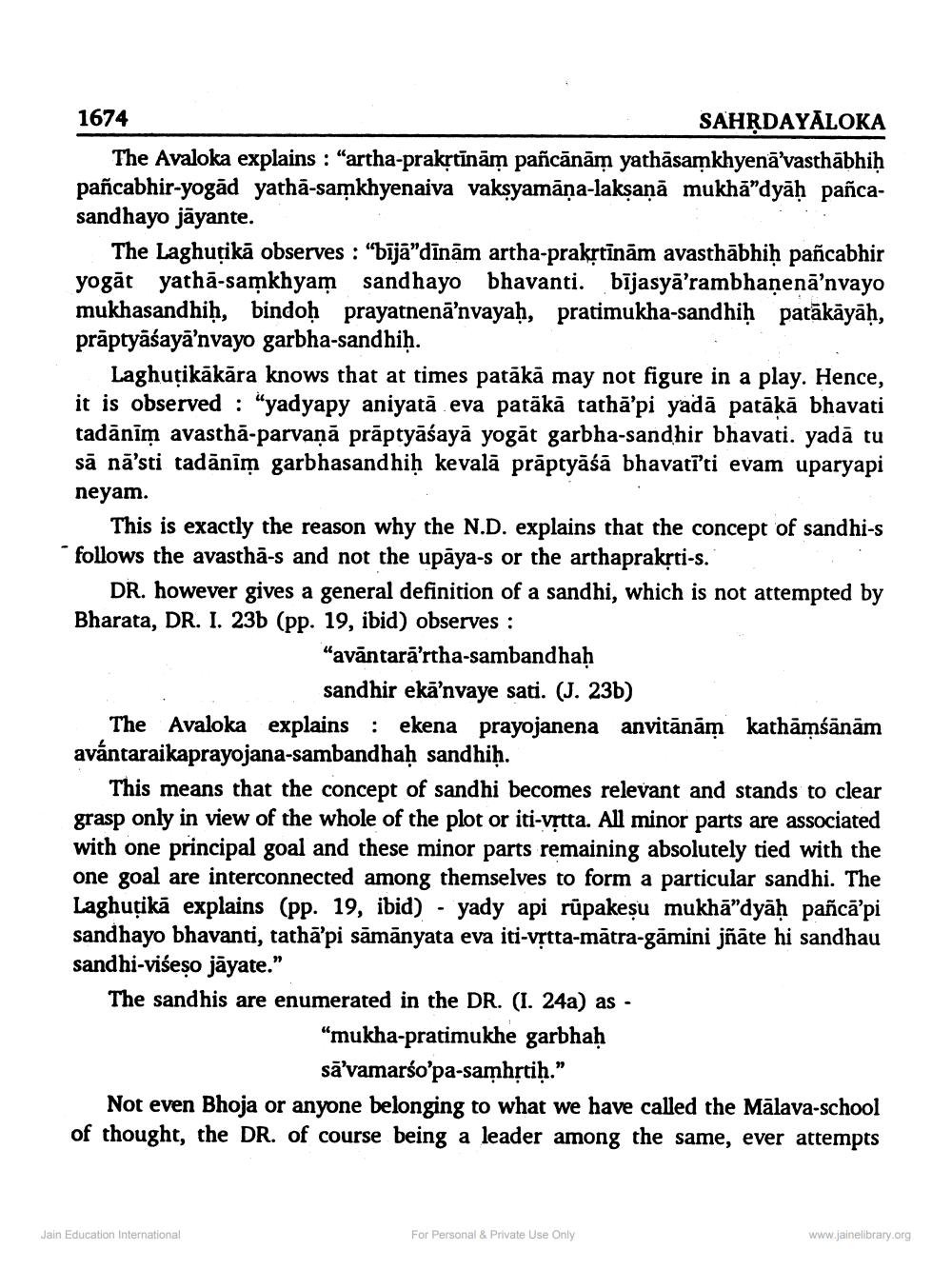________________
1674
SAHĶDAYĀLOKA The Avaloka explains : "artha-prakstīnām pañcānām yathāsamkhyenā’vasthābhiḥ pañcabhir-yogād yathā-samkhyenaiva vaksyamāņa-laksaņā mukhā”dyāḥ pañcasandhayo jāyante. The Laghuţikā observes : “Bījā”dīnām artha-prakstīnām avasthābhiḥ pañcabhir
yathā-samkhyam sandhayo bhavanti. bījasya'rambhanenā’nvayo mukhasandhiḥ, bindoḥ prayatnenā’nvayaḥ, pratimukha-sandhiḥ patākāyāḥ, prāptyāśayā’nvayo garbha-sandhiḥ.
Laghuţikākāra knows that at times patākā may not figure in a play. Hence, it is observed : “yadyapy aniyatā eva patākā tathā'pi yadā patākā bhavati tadānim avasthā-parvaņā prāptyāśayā yogāt garbha-sandhir bhavati. yadā tu sā nā'sti tadānīm garbhasandhiḥ kevalā prāptyāśā bhavatī’ti evam uparyapi neyam.
This is exactly the reason why the N.D. explains that the concept of sandhi-s follows the avasthā-s and not the upāya-s or the arthaprakrti-s.
DR. however gives a general definition of a sandhi, which is not attempted by Bharata, DR. I. 23b (pp. 19, ibid) observes :
"avāntarā’rtha-sambandhaḥ
sandhir ekā’nvaye sati. (J. 23b) The Avaloka explains : ekena prayojanena anvitānām kathāmśānām avántaraikaprayojana-sambandhaḥ sandhiḥ.
This means that the concept of sandhi becomes relevant and stands to clear grasp only in view of the whole of the plot or iti-vștta. All minor parts are associated with one principal goal and these minor parts remaining absolutely tied with the one goal are interconnected among themselves to form a particular sandhi. The Laghuţikā explains (pp. 19, ibid) - yady api rūpakeșu mukhā”dyāḥ pañcā’pi sandhayo bhavanti, tathā’pi sāmānyata eva iti-vștta-mātra-gāmini jñāte hi sandhau sandhi-viśeşo jāyate." The sandhis are enumerated in the DR. (I. 24a) as -
“mukha-pratimukhe garbhaḥ
sā'vamarśo'pa-samhștiḥ.” Not even Bhoja or anyone belonging to what we have called the Mālava-school of thought, the DR. of course being a leader among the same, ever attempts
Jain Education International
For Personal & Private Use Only
www.jainelibrary.org




